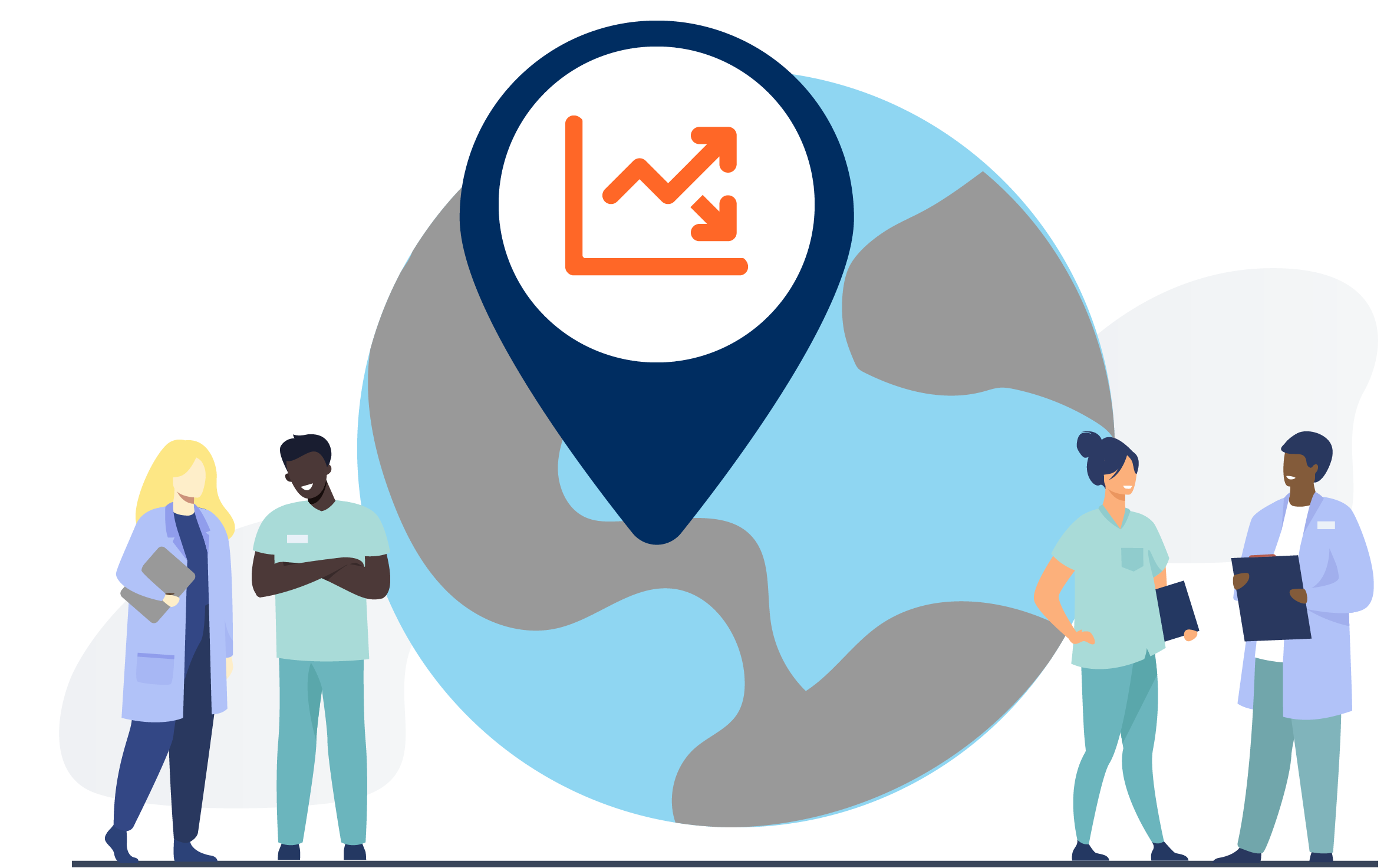Socioeconomic determinants: Learning objectives
- List major social and economic determinants of health and their impacts on the access to and quality of health services and on differences in morbidity and mortality between and within countries
- Discuss connections among health, cost of illness, and impact of health expenditure on poverty and health outcomes
- Read
- Do
- Apply
-
Introduction to Global Health 101, Chapter 3, sections 3.1–3.5.
-
Use the “Active Learning Companion” to guide reading and capture key points.
- What definitions are provided for: Extreme Poverty, Human Development Index, Multidimensional Poverty Index, Gini Index, Gender Development Index
- What do you think are some pros/cons of using the HDI or the MPI as measures to capture socioeconomic status of persons in different populations?
- In what ways are literacy and employment relevant considerations for global health?
- Based on the definition of refugee offered in this text, in what ways do you think concepts of global health would apply to refugee populations in the United States?
- How relevant is “governance” to global health?
- What definitions are provided for: Extreme Poverty, Human Development Index, Multidimensional Poverty Index, Gini Index, Gender Development Index
-
On the Slack discussion board:
-
- For country of interest:
- Find the UNDP reports. How has development changed over time (HDI)?
- What is the economic profile (i.e., percentage in extreme poverty, percentage in relative poverty)?
- What does the divide between rich and poor look like (how wealthy are the rich, how impoverished are the poor and what percentage of the population are in each group?)?
- How does this compare to the United States?
- For country of interest:
- What is the racial and ethnic make-up of the country?
- Region/city/location of specific rotation site?
- Who are minorities in this population, and what health disparities are witnessed (if any) in minority groups?
- For the community that you currently work in, or plan to soon (e.g., residency):
- What is the make-up of the refugee population (estimated number, represented countries, gender, age, etc.)?
- What groups/institutions, locally, are engaged in socioeconomic domains affecting health?
- For country of interest:
Interactive Case Study: Determinants of Health Case Study.
-
- Activity adapted from Fredrick NB. Exploring Health Systems Within the Context of Social Determinants of Health: A Global Health Case Study. MedEdPortal. 2016;12:10457. https://doi.org/10.15766/mep_2374-8265.10457.
Cultural determinants: Learning objectives
- Describe how cultural context influences perceptions of health and disease
- Review some specific examples of how culture influences health behaviors and should influence the design of health interventions
Cultural determinants: Pre-module prompt
On the Slack discussion board:
-
- What is Culture?
- Thinking about your own cultural perspectives, what are two practices that promote health? What are two cultural practices that are harmful to health?
- Read
- More
- A David Napier, PhD et al. Culture and Health. The Lancet. Published: October 28, 2014. https://doi.org/10.1016/S0140-6736(14)61603-2
Reading companion
As you read and answer the questions below, think about:
-
- What are new terms or concepts to you? What concepts resonated best with you? What concepts did not resonate with you?
- Do you agree with the NHS Foundation Trust’s Commission that a ‘culture’ could be held to blame for unnecessary patient deaths? Why or why not?
- In what ways are racial heritage and ethnic identity distinct from culture? In what ways might they intersect with culture?
- How might the cultural experience of ‘assuming one’s own practices are universal rather than particular’ impact work in global health (from direct health care to policy work)?
- How might an evidence-based-medicine approach (that relies on what is consciously known) be at odds with “culturally-competent” care?
- The term “cultural competence” has been questioned in many arenas—can one be “competent” in a culture that is not their own? Is “cultural competence” a reasonable (or accomplishable) goal for medical education? What do you think?
- What elements of the culture of U.S. healthcare systems promote or preclude well-being?
- The authors argue that “Culture is the most important factor in the promotion of global health”—do you agree/disagree? Why or why not? What are risks of global health intervention without local cultural meaning making (for the low-income and for the high-income participants)?
- Bad Blood. From Paul Farmer Reader.
Environmental determinants: Learning objectives
- Describe the relationship between access to and quality of water, sanitation, food, and air on individual and population health
- Describe the interrelatedness of ecosystems, animal health, and human health and discuss the principles of the One Health approach to Global health
- Describe some of the most cost-effective ways of reducing the global burden of environmental health problems
Environmental determinants: Pre-module prompt
Consider what you have learned of population health/planetary health to date in your education. List below three different diseases or conditions that can be caused by each of the following, then select the Submit button:
-
- Poor water quality
- Poor sanitation
- Lack of access to safe, healthy food
- Poor air quality
- Read
- Listen
- Reflect
- Apply
- Global Health 101, Chapter 8: Environment and Health. Focus on basic principles and examples related to WASH —with direct impact to invidual health. Includes case studies of successful projects in Senegal and Java.
- In response to the Global Health 101 case studies: Marketing is complicated, and unintended consequences are common in development projects. Dani Barrington and Jamie Bartram, Toilet marketing campaigns in developing countries erode people’s dignity—this is not acceptable, The Conversation, December 6, 2017.
- One Health: An introduction. "From 'one medicine' to 'one health' and systemic approaches to health and well-being."
- Podcast: Better Together Episode 5: Global Environmental Health. This is a conversation with a global health professional with specific experience in environmental impacts to communities' health where he works in Ukraine. In addition to his expertise on the effect of war on the environment and the impact on health, he has general insight to 'how to work' as a global health professional.
On the Slack discussion board:
- Discuss the Better Together Podcast:
- What did you learn? What are 3 key points that you take away from this discussion?
- What do you think? Were there any 'pieces of advice' that stood out to you from Dr. Hryhorczuk?
- What else do you want to know?: What additional questions would you have for Dr. Hryorczuk if you were interviewing him?
- Planetary Health Alliance Case Study: Medical Clinics for Planetary Health
-
Choose two questions to answer on the Slack discussion board from the following:
-
vi: What are the mechanisms at play here? (Related to the association of flooding with increase in multiple health problems.)
-
ix: (Modified) What is the recommended ratio (of general practitioners per population) by the WHO? What is it for your country and state? And what is it for your country of interest?
-
xv: Why do you think post-colonial governments favored exploitation over conservation?
-
xxv: These techniques fall broadly in the category of action/research methods called Community-based Participatory Research—or CBPR for short. Why are these methods important? Why are they useful? When should they be used?
-
xxviii: What is meant by “primary care” and “primary health care”? How are these different? Why is this difference important?
-
xxxii: How can planetary health organizations like ASRI and Health In Harmony overcome the challenges of single-sector funding? What are ways foundations and grantors could adapt their system to acknowledge the need for holistic approaches?
-
-

